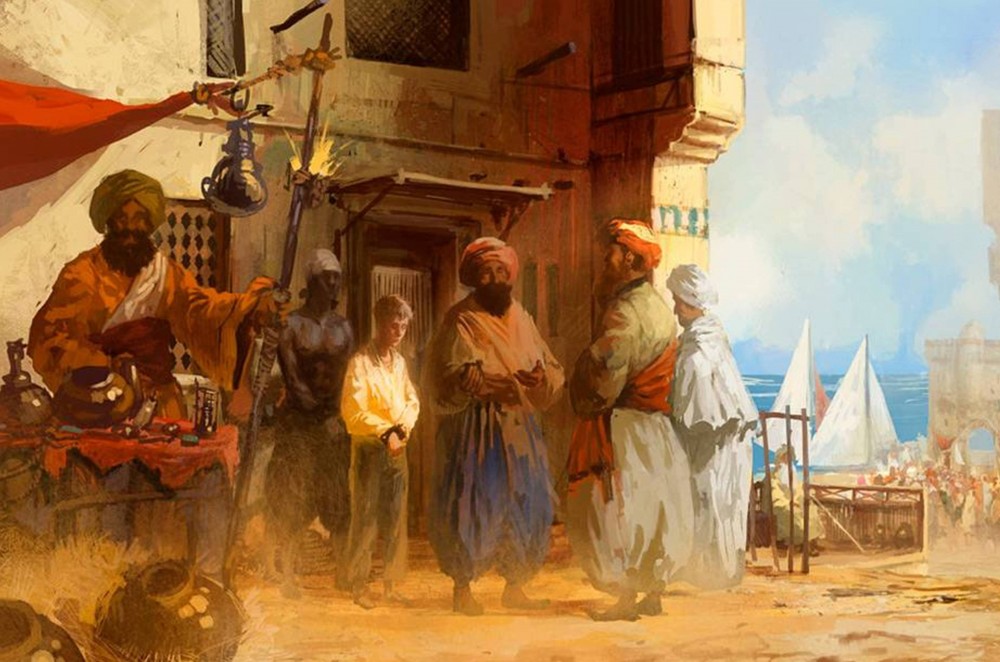A Slave in the Ottoman Empire: Who is Michael Heberer of Bretten?
Michael Heberer rowed as a slave on Ottoman galleys for years. He spent part of his captivity in Istanbul. After gaining his freedom in exchange for ransom, he explored the streets of Galata and Istanbul within the city walls. His memoirs were published in Heidelberg in 1610.

The work of Michael Heberer, who was born between 1555 and 1560 near the city of Heidelberg, located in the southwest of today's Germany, a few kilometers from the French border, has a special place among the captivity memoirs we have.
It owes this privileged position to some extent to its description of Istanbul and the Eastern Mediterranean. Foreign memoirists who met with Ottoman shipyards and galleys after being captured at sea in the late 1500s and early 1600s were generally in Tunisia or Algeria. The famous Spanish figure Miguel de Cervantes, the author of Don Quixote, who was imprisoned in Algerian dungeons and remained there for several years, is one of them. On the other hand, those who saw Istanbul were mostly clerks, priests, or scientists who came with their ambassadors. Even in this period, which is considered early for "touristic travel", we can come across a few people heading to Istanbul with the intention of having fun and gaining world experience.
In this case, Heberer, who tells us about the Istanbul shipyard as a prisoner of rowers, approaches the administrative problems related to the supply of rowers mentioned in the Ottoman documents from a different perspective. Michael Heberer rowed as a slave on Ottoman galleys for years. He spent part of his captivity in Istanbul. After gaining his freedom in exchange for ransom, he explored the streets of Galata and Istanbul within the city walls. His memoirs were published in Heidelberg in 1610.
Convict life in the galley, sea battles, Ottoman baths, clothing of Muslim and Greek women, Admiral Kılıç Ali Pasha, the launching of the admiralty galley, a burning galley in the harbor, the plague epidemic in the city, the richness of trade in the Bedesten, the streets of Istanbul. , the Column of Arkadios, which we have never seen because it was destroyed in 1811, the Galata Palace Hearth, which can be considered the ancestor of today's Galatasaray High School, and finally the sultan's hunting trip...
You may come across the following sentence in the beginning chapters of the book:
“Paris, in my opinion, with its outskirts, is the largest and most beautiful city in Europe, but it is only second to Constantinople.”
Although Heberer admits this, he says that he prefers Paris to Istanbul. From where? Because of its official buildings, palaces, residences, bridges, famous academies, and the Palatium in the middle of the Seine River, where the supreme court and parliament are located.
Heberer is a Protestant and a German. He is an educated man. He speaks several languages.
The period in which he lived was when sectarian wars wreaked havoc all over Europe.
Heberer witnessed a scene of these sectarian wars while he was going from Marseille to Malta.
“That evening, I was invited to the house of one of the city's important merchants with Secretary Carre. We heard these screams in horror as we were returning home late at night. The night guards stopped us and interrogated us. When we responded to them appropriately, they warned us not to leave the house we were staying in if we didn't want bad things to happen to us.”
“Early the next morning, a crier went through the streets and squares of the city and announced the king's orders to the accompaniment of drums and trumpets. All Hugenottes and Protestants in the city would either be slaughtered or thrown into prison. "Those who did not carry the white cross on their hats would be treated the same and would also be arrested." (Hugenotte: French protestants.)
“In the morning, after the king's order was announced to the people with drums and trumpets, the city turned into a bloodbath. Everywhere people were being put to the sword and slaughtered with great greed. "Remembering these events makes me so sad that I don't want to talk about it anymore."
“The port and city gates were closed to everyone and all kinds of entry and exit. Many honest, religious men and women were dragged from their homes, beaten, beaten, stabbed, dragged through the streets like dogs, and thrown into the sea, for no legal reason, simply because they were Protestants.”
The ship that will take Heberer to Malta anchors in Marseille when this chaos calms down a bit.
“Finally, by relying on God's help and taking refuge in His supreme protection, we saved ourselves from this bloodbath and left with a feeling of pity for these oppressed Christians.”
Here is some historical information that we can catch between the lines:
“When the King of France asked for help from the Turks against the Roman Emperor Charles V in 1555, the Turks captured this island.”
Here Heberer enters the service of one of the Maltese knights.
What do the Knights of Malta do?
They raid and plunder the surrounding islands under Ottoman rule or the Muslim towns on the African coast. If they find a Muslim commercial ship at sea, they confiscate it.
In Heberer's first days in Malta, the knights again set out to sea with galleys.
“When the galleys returned from the expedition, they brought about 400 blacks and 30 janissaries as prisoners. They were taken to Burg, on the opposite side of the city of Valletta, and imprisoned.”
